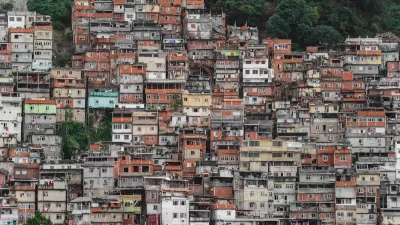Renovating old buildings instead of demolishing them as the better "green" option is preservation orthodoxy. But what if the decision between renovation and demolition is less than clear-cut?

Right at the beginning of this TreeHugger article by Lloyd Alter, the reader has been warned of forthcoming heterodoxy:
For years, this TreeHugger has been a proponent of preservation and renovation rather than demolition and replacement. But over the years I have renovated my own house twice, added a bit of insulation here and there but not enough to make a serious difference, because I wanted to retain that historic character of the wood and the windows. In the process I have probably spent as much money as I would have had I knocked it down and replaced it, and I have now "locked-in" fossil fuel consumption and carbon emissions, even though I pay a premium for "green" Bullfrog power and gas.
According to Alter, that choices were contrasted with a recent project by Bryn Davidson of Lanefab, which demolished an "asbestos laden fossil fuel hog" in favor of a new passive house. The key point for Alter is the "locked in" nature of emissions connected to buildings. Unlocking emissions from existing buildings is "really expensive and challenging," according to Alter.
"I keep saying, 'The greenest building is the one already standing,' but if we want a world of zero emissions, along with increased density and affordable housing, we might have to give up a bit of that "neighbourhood character" or other similar excuses that are often used to prevent new housing from being built, and learn from Byrn."
FULL STORY: Renovation or demolition? The question gets tougher every day

Alabama: Trump Terminates Settlements for Black Communities Harmed By Raw Sewage
Trump deemed the landmark civil rights agreement “illegal DEI and environmental justice policy.”

Planetizen Federal Action Tracker
A weekly monitor of how Trump’s orders and actions are impacting planners and planning in America.

The 120 Year Old Tiny Home Villages That Sheltered San Francisco’s Earthquake Refugees
More than a century ago, San Francisco mobilized to house thousands of residents displaced by the 1906 earthquake. Could their strategy offer a model for the present?

In Both Crashes and Crime, Public Transportation is Far Safer than Driving
Contrary to popular assumptions, public transportation has far lower crash and crime rates than automobile travel. For safer communities, improve and encourage transit travel.

Report: Zoning Reforms Should Complement Nashville’s Ambitious Transit Plan
Without reform, restrictive zoning codes will limit the impact of the city’s planned transit expansion and could exclude some of the residents who depend on transit the most.

Judge Orders Release of Frozen IRA, IIJA Funding
The decision is a victory for environmental groups who charged that freezing funds for critical infrastructure and disaster response programs caused “real and irreparable harm” to communities.
Urban Design for Planners 1: Software Tools
This six-course series explores essential urban design concepts using open source software and equips planners with the tools they need to participate fully in the urban design process.
Planning for Universal Design
Learn the tools for implementing Universal Design in planning regulations.
Clanton & Associates, Inc.
Jessamine County Fiscal Court
Institute for Housing and Urban Development Studies (IHS)
City of Grandview
Harvard GSD Executive Education
Toledo-Lucas County Plan Commissions
Salt Lake City
NYU Wagner Graduate School of Public Service





























